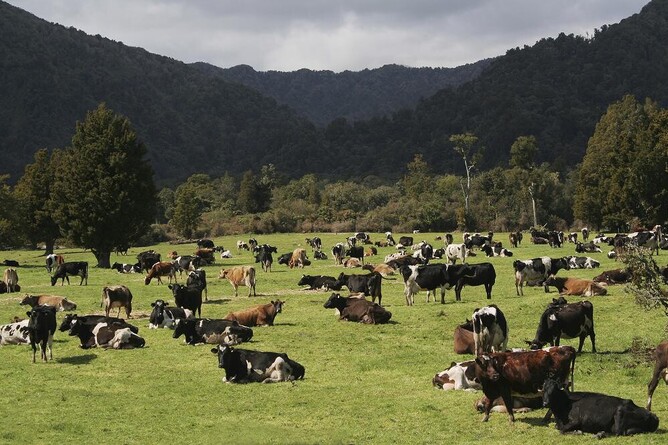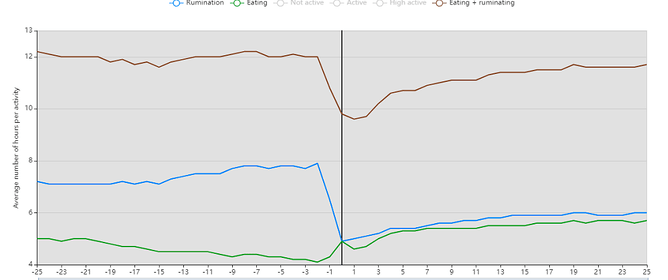The transition period (the three weeks before and after calving) is probably the most important time in a cow’s lactation.
There are a lot of changes happening all around the same time - changes in diet, environment, energy demands and metabolics, not to mention giving birth.
Getting this period right can set your herd up for a great season, but getting it wrong can lead to many issues - excessive body condition loss, more diseases (such as RFMs, metritis, mastitis, milk fever, ketosis) and ultimately a poorer result at mating time.
With more and more farms using rumination technology, we are able to get a deeper insight into what is happening over the transition period, especially in terms of rumination recovery.
When a cow calves she has a sudden drop in rumination. This is normal and expected, but we want to see that rumination recover quickly after calving. Cows that have a slow recovery of rumination aren’t eating enough and therefore are more likely to enter a state of ketosis (negative energy balance). Ketosis, even at a subclinical level, has a big effect on a herd’s reproductive outcomes.
The graph below is an example of a herd with slow rumination recovery post-calving last season. The black line in the middle represents calving for all cows in the herd, with the green line showing eating, blue showing rumination and brown showing eating and rumination combined.
Rumination and eating levels were very good pre-calving, took a dive on the day of calving, as expected, but took quite a while to climb back up again.
Strategies like ensuring a good transition off crop, adequate time in the springer mob, and once-a-day milking after calving all help to improve rumination rates.
We are seeing more and more farms choosing to milk cows once-a-day following their colostrum period, moving to twice daily milking once cows are better able to cope. These farms are seeing some really positive results.
Recent research from cows with rumination technology has found that cows that are milked once-a-day for 14 days after calving (rather than twice a day from the start or even 2-5 days) have a faster recovery in rumination, which followed through to up to a 10% difference in 6-week-in-calf-rate over mating. These farms didn’t report lower milk production for the season, likely because cows maintained better condition through early lactation. It’s not too late to start this now.
Later calving cows have a much more difficult time getting through calving and ready for mating and as a result have a much higher chance of being empty. If you want help developing a strategy that could be right for your farm, call your KeyVet.
All farms are different
It is important to remember that all farms are different (different genetics, nutrition etc), so it is difficult and sometimes unfair to compare farms directly.
Some solutions won’t work on some farms. However, the great thing about data is that you can not argue with it; the challenge is to find the right solution for your farm.
We are seeing a lot of variation in ‘normal’ rumination/eating levels in our technology-using herds. This doesn’t necessarily mean that one farm is doing better than the other.
Our technology team is enjoying working with our clients using technology to help understand how different farm systems and strategies affect outcomes like milk production, reproductive outcomes, disease incidence and BMSCC. Watch this space for more updates!
- Christine Utting BVMS (Hons)


